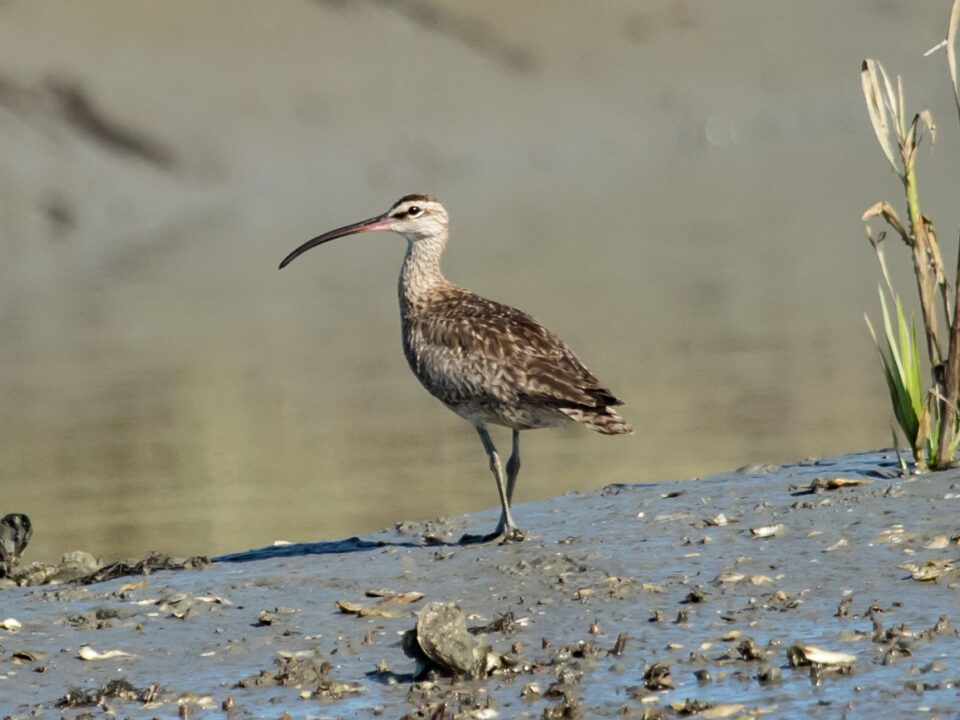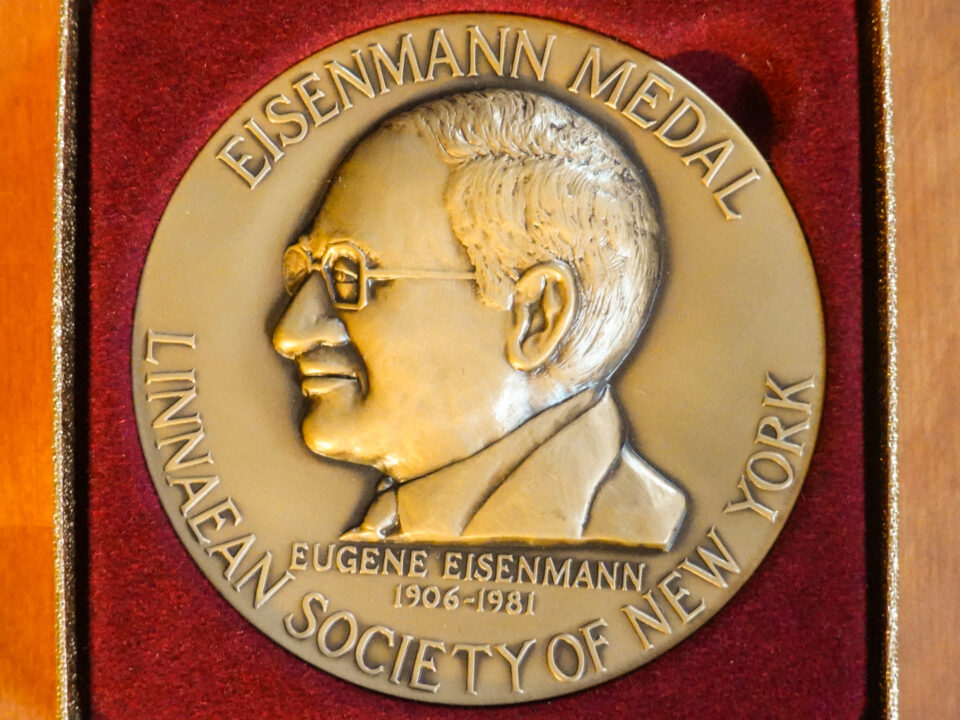Virginia Peregrines have Mixed Year in 2017

Moving Woodpeckers 3
January 8, 2018
Gender Divide in Bald Eagles
January 8, 2018By Bryan Watts | bdwatt@wm.edu | (757) 221-2247
January 7, 2018
Virginia supported a known population of 29 pairs of peregrine falcons during the 2017 breeding season (download 2017 report). Two new breeding sites were documented but three long-standing territories were unoccupied. The population had a relatively high hatching rate (81%, 56 of 69 eggs hatched) but some losses both before banding (16.1%, 9 of 56 young lost) and after fledging (3 young known to be lost post-fledging). Of 21 clutches that could be followed completely from laying to fledging, 41 of 53 (77.4%) eggs hatched and 35 of 41 (85.4%) young survived to banding age. The reproductive rate (1.62 young/occupied territory) was considerably lower than in recent years.
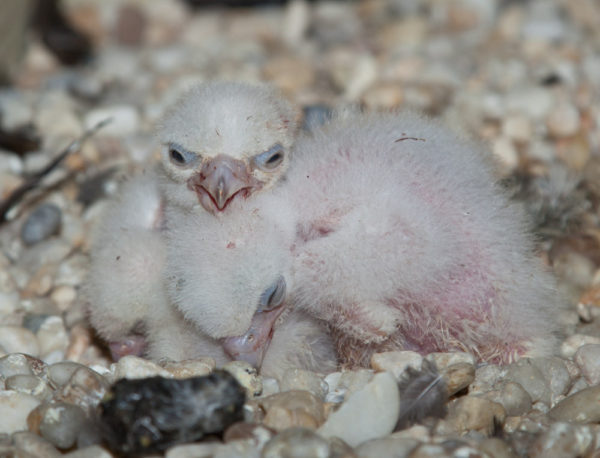
Three young falcons huddle together in a new nest box installed on the Eltham Bridge in Virginia. The use of nest boxes on bridges has increased falcon productivity and reduced conflicts with bridge operations. Photo by Bryan Watts.
Efforts continued in 2017 to identify breeding adults via field-readable bands to better understand dispersal and demography throughout the mid-Atlantic region. The banding status of 47 (81%) of the 58 adult peregrines known within the breeding population was determined. Ten (21%) of the 47 birds were unbanded. The alpha-numerics were read for 29 adults and of these the USGS bands have been recorded for 26. Of the banded birds where state of origin could be determined, 22 were from VA, 5 from NJ, and 3 from MD. Birds ranged in age from 2 to 17 years old.
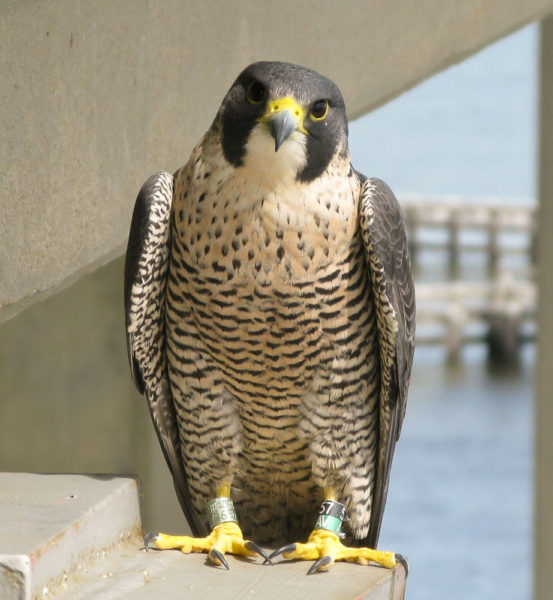
A considerable effort was made in 2017 to identify breeding adults. This female is four-years-old and was hatched on Mockhorn Island in Virginia. Photo by Bryan Watts.
In addition to adults breeding in Virginia, bands for 12 additional falcons were read and reported over the past year. Seven of these birds (all females) originated in Virginia and were found breeding in other states, including 3 birds in Pennsylvania and 4 birds in New Jersey. A second-year female was photographed multiple times on Chincoteague National Wildlife Refuge. A hatch-year male from Richmond was photographed in Lyndhurst, NJ and a hatch-year female that had been hacked in Shenandoah National Park was photographed near Silver Lake in Rockingham County, VA. A 5-year-old female was identified in Westchester, NY during the early breeding season and may have been on a territory.
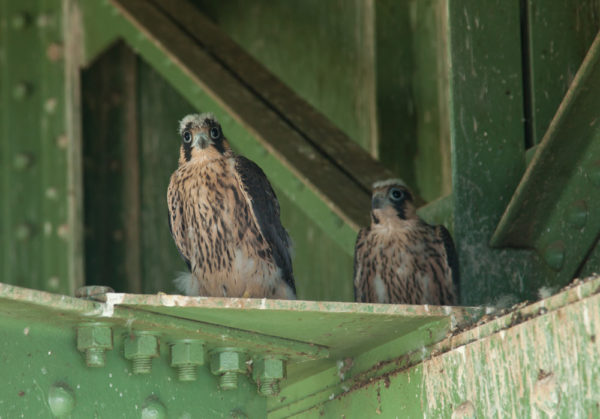
Two young falcons within days of fledging on the Benjamin Harrison Bridge near Hopewell, Virginia. Photo by Bryan Watts.
The translocation of falcons from the coast to the mountains in an effort to re-establish the historic mountain range continued in 2017. Ten young falcons (including five females and five males) were moved to Shenandoah National Park and hacked. All birds were from bridges that have experienced poor fledging success except two birds that were found on the ground under the Possum Point stack around the time of fledging. All birds fledged and dispersed successfully.
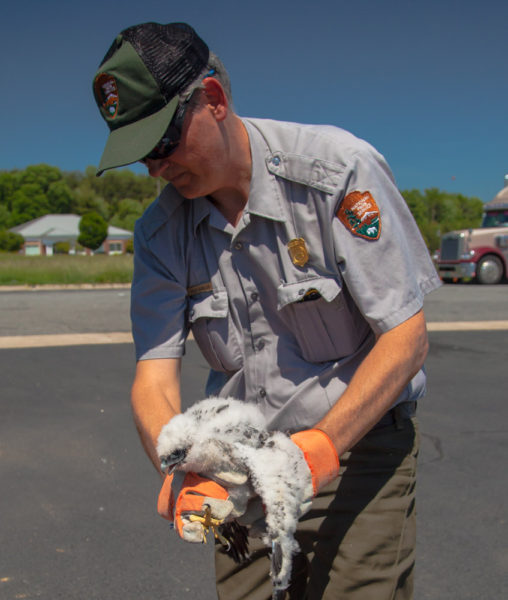
Rolf Gubler from the National Park Service transfers a young falcon to a box for transport to a hack site within Shenandoah National Park. Rolf has managed the release of falcons into the park for nearly 20 years. Photo by Bryan Watts.
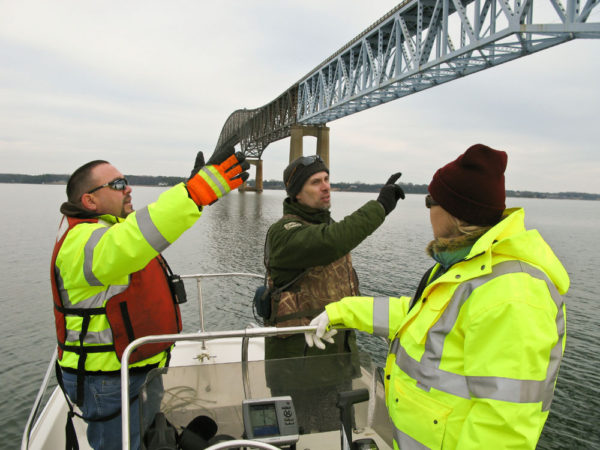
Sergio Harding (m) from the Virginia Department of Game & Inland Fisheries, along with Alvin Balderson (lft) and Theresa Tabulenas (rt) from the Virginia Department of Transportation out on the Rappahannock River to discuss placement of a nest box on the Norris Bridge. Photo by Bryan Watts.
The Virginia population continues to benefit from a tremendous community of dedicated agencies, corporations, and individuals including the Virginia Department of Game & Inland Fisheries, the Virginia Department of Transportation, the U.S. Fish and Wildlife Service, the National Park Service, the U.S. Coast Guard, the U.S. Department of Defense, Dominion, and The Nature Conservancy.


